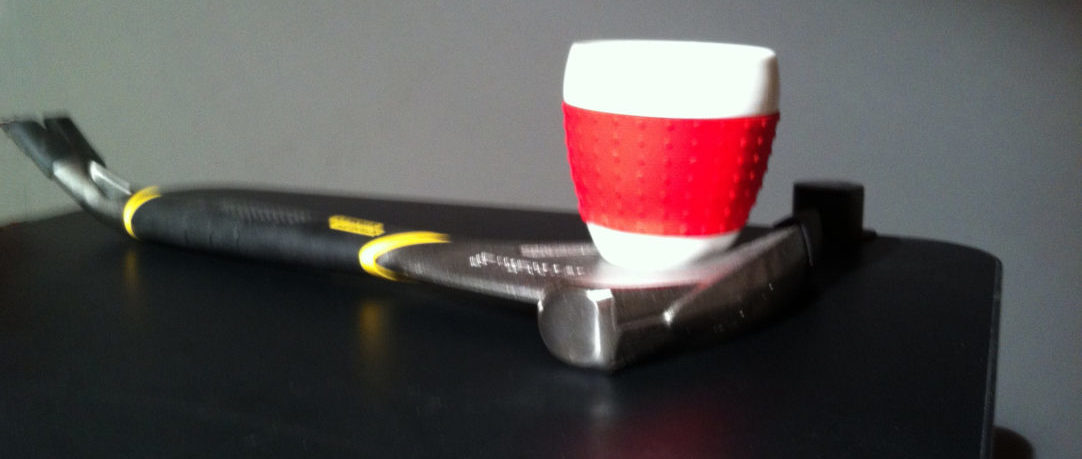The Democracy of Objects
I read Levi Bryant’s The Democracy of Objects a couple of months ago, but it’s taken me a while to coalesce my thoughts on it. Here they are (I’ve come to one viewpoint about the first part of the book and another about the second part of the book):
The first part, in which he talks about “objects for themselves,” as opposed to objects that exist for us, is a clear, grounded, thoughtful exposition of the goals object-oriented-ontology has set for itself (sadly the standard term for “objects for us” is correlationist. I find this unfortunate — it makes me start thinking in terms of statistics, rather than ontologies — which are arguably different)
This “objects for themselves” perspective seems the only one that can possibly be valid — it makes no sense that objects interactions with each other would be predicated upon our existence. Certainly our interaction with them and how we perceive them requires us to exist, but that’s a different matter (which has been the focus of “conventional” philosophy).
As I mentioned previously https://www.deictic.net/2012/11/07/some-applications-of-object-oriented-ontology/ pushing on this idea in areas designed to support science might be a useful application of object-oriented ontology. I’m new to this thought. My previous perspective was to use “middle distance ontologies” which were more salient to the user, but are less robust if the science is in flux.
Despite my overall receptivity to this argument, I have some qualms (which are not particular to this book but permeate my overall reaction to object-oriented ontology), e.g., from p 60
What the epistemic fallacy identifies is the fallacy of reducing ontological questions to epistemological questions, or conflating questions of how we know with questions of what beings are. In short, the epistemic fallacy occurs wherever being is reduced to our access to being.
When I read that, they can’t help thinking about the view from nowhere the quasi-omniscient disembodied stance that allows us to have an unbiased perspective on the situation. This seems to be exactly the opposite of what object-oriented-ontologists are trying to achieve (although fairness they hold it out as a goal rather than present it as being an accomplishment). After all, the only way we can access being is through our access to being. Instruments and tooling can extend our access, but in the final analysis we ourselves are the final interface. (after posting this, I came across a post of Bryant’s that discussed exactly this issue)
I found his description of events the best part of the book. He describes events as being the interaction of object + environment + observer. With the object always exceeding the event and, if I read him correctly, always exceeding the sum of all the events for which the object can serve as a ground. This is partly due to limitations of the observer partly due to the limitations of the environment but mostly due to the excessive capacity of the object
P 89
My thesis is that the substantiality of objects is not a bare substratum, but rather an absolutely individual system or organization of powers.
He has an extensive discussion of a blue coffee mug with a core quote being (p 90)
The blueness of the mug is not a quality that the mug has but is something that the mug does.
In this analysis the object transitions from being a passive thing to an entity that actively (but not consciously) structures the environment. Considered the case of light hitting an object. The object reflects some of the light absorb some of the light and may be transparent to some of the light depending upon the light’s wavelength the angle of the object in the momentary internal structure of the object, e.g., frozen water, liquid water, or gaseous water, All of which have decidedly different optical properties. This type of active structuring of the environment by the object and the object by the environment has sadly been missing from much of the thought in this area and its presence here highlights the potential advantages of the object oriented approach.
The second part of the book, particularly its discussion of Lacan’s “discourse of the master, first introduced in Seminar XVII” I find less satisfying.
I will admit that I just didn’t get the argument in this section. I see where he is trying to go, but I find his use of the equation more obfuscating than informative. I will attribute this to my unfamiliarity with using Lacan in this way rather than fault his presentation.
My only comment on the has to do with the following p 262
Objects always have a virtual domain that is never exhausted by any of their local manifestations. On the other hand, objects are withdrawn in the sense that they are never directly perturbed or “irritated” by other objects, but rather always translate perturbations into information according to their own endo-structure,
I find that this fundamentally overlooks how interactions happen, unless he is positing action at a distance, which I think unlikely, there has to be some material interactions for the perturbations to even be sensed by the object.
I should note that the PDF of the book is also available for free download
So what we have then is a cogent description of the object for itself, presenting a useful set of criteria for grounding our analysis of a particular object in a particular situation. Which makes it a book worth exploring.

Leave a Reply